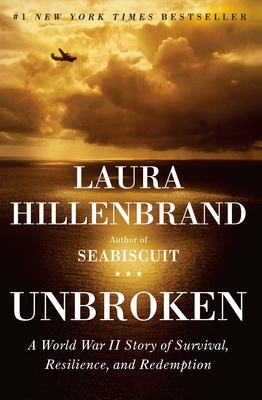 |
| Source |
Louis Zamperini was born in 1917. Hillenbrand's book starts with his childhood move to Torrence, California and his struggles to fit in. It wasn't until he was almost held back in school that he discovered track and field. He was able to turn his life around and became a star athlete in the 1930s. Zamperini held the NCAA Mile record for 15 years. He ran a mile in 4:08.3 (no runner had yet broken a 4-minute mile) and that was despite being spiked in the shins. Zamperini also competed for the United States in the 1936 Summer Olympics in Berlin, Germany.
At this point in the book most of the talk about running stops. Mainly because Zamperini signed up to fight in World War II. For much of the remainder of her book Hillenbrand delves into Zamperini's wartime life. After signing up to fight Zamperini was trained as a bombardier in a B-24 Liberator. He was stationed in Hawaii and flew missions over Nauru and Wake Atoll in the Pacific during the Allied conflict with Japan.
In 1943 the plane Zamperini was flying in crashed into the Pacific Ocean during a search and rescue mission for another downed plane. The only survivors were Zamperini, pilot Russell Alan "Phil" Phillips, and tail gunner Francis "Mac" McNamara. They spent 47 days at sea although Mac died before they reached land. Despite surviving shark attacks, rough seas, dehydration, and starvation they did not find themselves in the best of circumstances. They were apprehended by the Japanese. The men were treated well for a few days, but then sent on to Kwajalein in the Marshall Islands which had been nicknamed Execution Island by the US Forces. Zamperini found himself a prisoner of war (POW) although he was never identified as such by the Japanese.
After Kwajalein he was moved to Ofuna, a secret interrogation centre, where he was physically and emotionally abused and starvation was commonplace. Between 1943 and 1945 Zamperini was also located at Omori and Naoetsu POW camps. At these last two camps he was tormented by an officer he called The Bird (Mutsuhiro Watanabe). It's hard to describe here what Zamperini went through. Hillenbrand goes into fairly particular detail of the torture he experienced. If you haven't read a lot of historical non-fiction it can be a hard part to get through.
In 1945 Zamperini was liberated at war's end. However, coming back to the United States was not an easy transition. He turned to alcohol to numb his pain and suffered flashbacks and nightmares in which The Bird haunted him. Zamperini's life was changed when his wife took him to see Christian evangelist Billy Graham. He remembered that when he was lost at sea that he had made promises that if he was spared he would devote his life to God. Zamperini became a Christian speaker. Post-conversion he worked with what would now be termed "at-risk" youth. He still received accolades for his survival and ran the Olympic torch both in Los Angeles in 1984 and Nagano, Japan in 1998. There he ran past the site of his last POW camp. Although Zamperini was able to meet and forgive his ex-captors he was never able to do the same with The Bird. There had been the possibility of contact, but they would not meet before Watanabe's death. Zamperini is now 94 years old.
I really enjoyed this book - it's so much more than my very brief review. I need to be upfront and say that I have a History degree so this is my kind of book. It's a biography and historical non-fiction. In fact in the cataloging of the book "long-distance runners" is the last one listed. I found it pretty easy to read and, even though it has a lot of facts (I'm nerdy and read the acknowledgements and footnotes too), it isn't boring. It's a little hard to get through at points, but that is because it was. You can't really, nor should you, sugar-coat war.
I guess my conclusions would be: read this book if you like history or biographies. Don't read this book if you are expecting much about running. For that you can find the excerpt at Runner's World.






I'm reading it now. I'm having a hard time getting through it but I agree that it is interesting.
ReplyDeleteI LOVED Unbroken. I usually have a really hard time reading history (I WANT to like history, but I get so bored and distracted). I loved that this book read like a novel, kept me interested AND taught me about history. And the fact that running was mixed in was an added bonus!
ReplyDelete